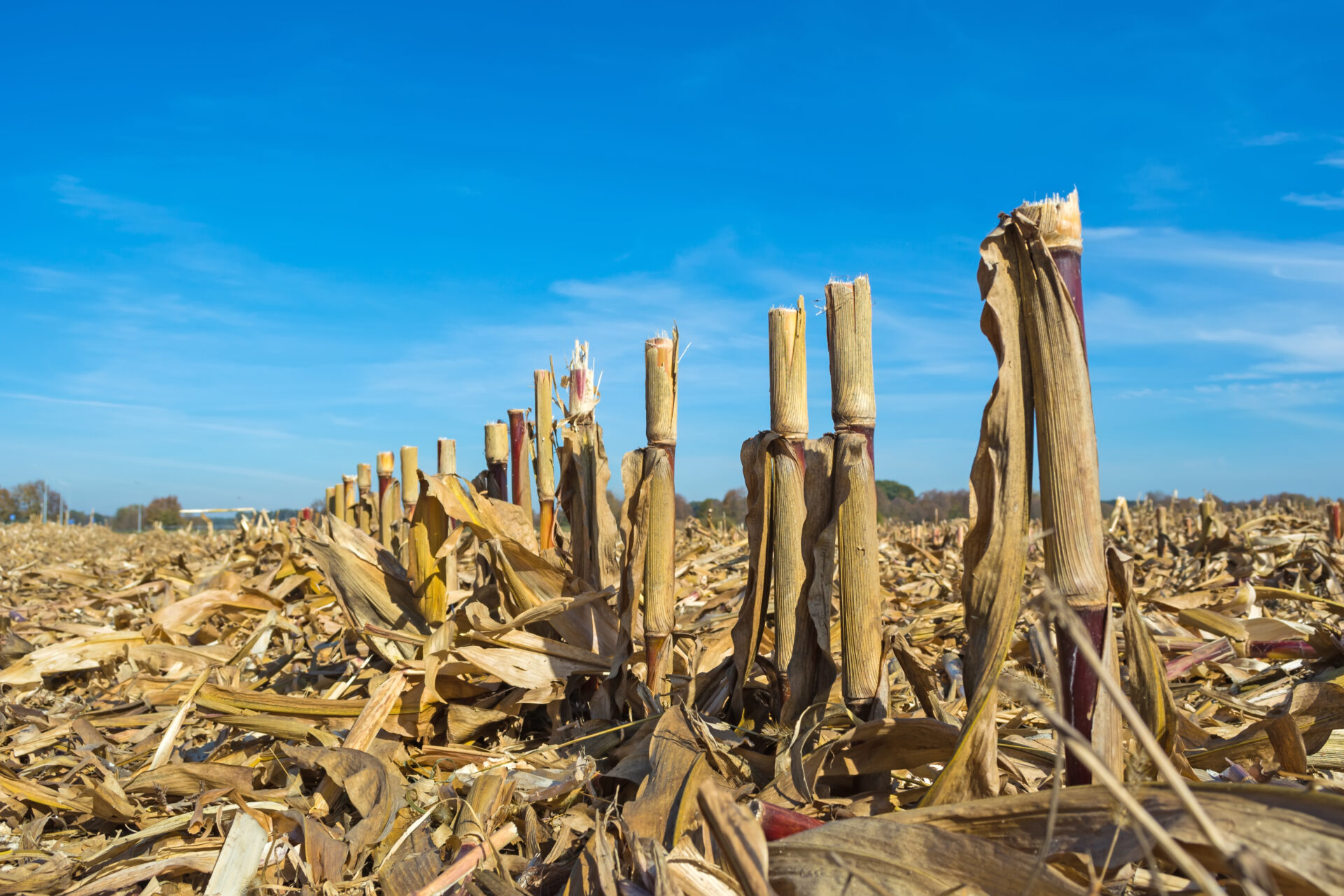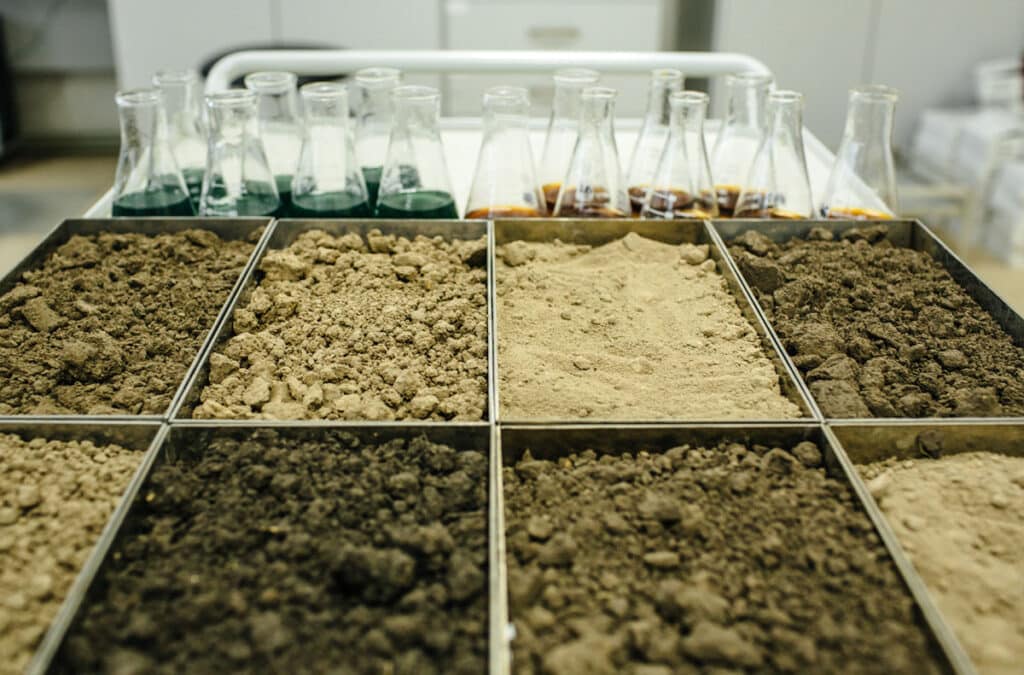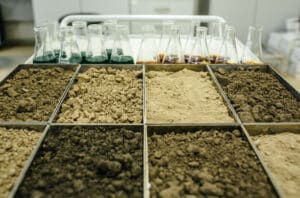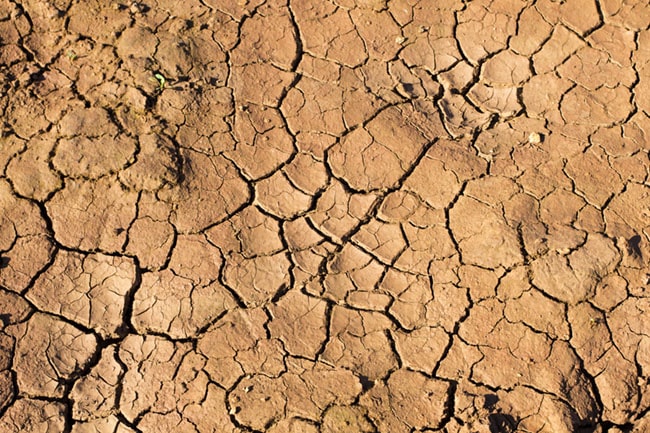Nov 12, 2025



Soil salinity is the amount of dissolved salt in soil. Soil salinity issues occur when soluble salts begin to accumulate in the root zone. When soluble salts accumulate in the root zone, water and nutrient uptake can be inhibited, which is detrimental to crop production, the environment, and yields.
Some common signs your fields may have a salt problem include:
Your crops can also display signs of high salinity in the soil, such as inhibited germination and emergence, water-stressed plants, and leaf-tip burn.
When it comes to high salinity levels, your best line of defense is a great plan to avoid salt accumulation by promoting soil health, texture, and structure. The next best plan is to recognize the signs of rising saline levels and take action. The earlier soil is treated, the greater its chances for a full recovery.
Saline areas will grow in size if left unmanaged. It’s important to invest in the health of your soil, which starts with your soil microbes. Feeding beneficial microbes a carbon-rich microbial food, like PhycoTerra, can help promote healthy soil structure and texture.
Soils become saline when water encounters salt in the soil. The water dissolves the salt and brings it up to the root zone and soil surface through capillary action.
When the water evaporates from the surface, a white crust is often left behind. Salt can end up in your soil naturally and/or through human impacts.
Naturally, salt can come from physical or chemical weathering. The submergence of soil in seawater can also raise salinity levels, and rising sea levels increase the risk of seepage into areas lying below sea level. Lack of rainfall can also create a salt build-up without the rain to flush salt. Additionally, wind in coastal areas can transport salt inland.
Humans can impact salt levels by using salt-rich irrigation water, poor irrigation practices, or excess water from water logging or irrigation without proper drainage conditions. Excessive irrigation is especially dangerous in dry climates with heavy soil, as salt cannot be washed away in rainfall. Salt can accumulate on the surface of your soil due to soil compaction.
High salinity affects a plant’s physiological, biochemical, and molecular features, and reduces productivity. Thus, growers will have to increase seed, water, and fertilizer to turn out smaller yields and lower crop yields per unit or input. Impacts include yields at only 20% to 50% of record yields.
Crops also produce less biomass with reduced water use and nutrient efficiency. Soluble salt creates drought stress due to limited water uptake, adding stress to plants. Growers will also have less choice in crops, as high saline levels will force them to default to salt-tolerant crops.
Your crops may also experience changing disease patterns and an increase of vector-borne diseases. Ultimately, extremely saline soils can become infertile for almost any crop.
The higher your soil’s salinity is, the more your soil will suffer. Higher than normal salt levels will reduce water infiltration and retention. You’ll also notice an increased population of salt-tolerant organisms and a reduction in the population of previously dominant species. High salt levels limit water conductance, soil porosity, and aeration.
Dangerously high salinity levels can destroy all vegetation. Dead soil organisms can’t perform respiration, residue decomposition, nitrification, and denitrification – making a bad situation even worse. These types of soils have higher chances of erosion and degradation from wind and water.
Depending on the level of your field’s salinity, soil microbes may be able to help improve your soil’s health, support crop growth, and enhance overall yield potential. If you have inactive or starving soil microbes, they won’t be able to support your soil’s health. Most farms only have 25% of their soil microbes working for them.
Soil microbes include bacteria and fungi inside your soil. They’re the secret weapon when it comes to mitigating salt stress.
Salinity-tolerant plant growth promoting bacteria can assist plants in withstanding saline conditions. These bacteria trigger an osmotic response, provide growth hormones and nutrients, and act as a biocontrol agent. Soil microbes also promote growth, nutrient uptake, and increase antioxidant activities during salt stress.
High-saline levels create drought-like conditions, and soil microbes help mitigate abiotic stress by releasing substances into the soil and around the roots. The microbiome can also protect plants through stress avoidance and tolerance. This can enable higher crop production despite saline conditions. But, helpful bacteria and fungi can only step in to mitigate salt stress if they’re awake. On average, as much as 75% of microbes in farm soils are “sleeping”, i.e., dormant, due to starvation.
Some soil microbes can survive in saline conditions and help crops thrive in higher levels of salt. Recent research suggests soil microbes, especially those associated with plant growth, the rhizosphere, and the mycorrhizal network, can support plant nutrition during environmental stressors.
Keep in mind, to receive the benefits of soil microbes, they need to be fed a carbon product application.
While some soil microbes can survive in salty soils, it’s better to have healthy levels of saline to support your soil microbiome’s properties, community structure, and function. Increased levels of salt can lower overall microbial activity due to osmotic stress and toxic ions. It also reduces your soil microbiome’s diversity and overall population.
On more advanced levels, high salinity can destroy almost all living organisms in the soil.

If you think you have a salt problem, test for Electrical Conductance (EC), as salt raises EC levels. If you do have high salinity, find your highest saline areas and make a plan to correct the damage using one or more of the methods below.
Think of hydro-practices as a way to flush your fields and maintain proper drainage.
Good drainage meets leaching requirements in healthy soils. If your soils have a high saline level, minimize leaching requirements as far as possible to prevent raising groundwater and minimize water input to the drainage system.
Drainage systems you could consider implementing include:
The depth and spacing of your drainage system is based on the soil type and economic considerations for your farm.
When it comes to watering best practices, consider drip irrigation, alternating water resources, moving to rainfed fields, or desalination irrigation water. Experts also recommend fields at risk for high saline levels increase irrigation water every three to four watering events to flush salt.
Bio-practices for mitigating saline levels include planting practices and using applications like PhycoTerra.
Applying PhycoTerra to your fields wakes up soil microbes and puts them to work to improve soil structure and yield potential. Our proprietary microalgae superfood supports inoculants, which can help reduce abiotic stress, and feeds growth-promoting bacteria. It also feeds fungi in mycorrhizal networks, which can transport nutrients throughout their complex hyphae systems to crops in need. The bacteria and fungi also improve soil structure and texture, creating better drainage to assist in mitigating high saline levels.
Some crops can mitigate saline levels by adding organic or mineral amendments. And, certain chemicals may neutralize sodic soil conditions. Adding organics can improve soil permeability and the release of carbon dioxide. Compost or other organic soil amendments, including mulching with manure also support soil microbes, which, in turn, support your soil.
When planting, consider using a cheap seed (like barley) in saline areas and then adding alfalfa later to ensure stand and establishment. You could also choose a crop with high saline tolerance, such as legumes. Or, consider returning high salinity areas to perennial cover, or diversifying with agroforestry.
Most soils with increased saline levels can benefit from reduced tillage, which supports the soil microbiome.
If salinity has only impacted part of your fields, you can land level to create a more uniform application of water for better leaching – or you can introduce a new planting procedure, like planting on sloping beds or raised furrows.
In extreme cases, some growers will consider tilling to improve soil permeability, including deep plough to loosen soil aggregates. You can also mechanically remove salt from your soil’s surface.
Be careful with how much you disrupt your soil. Continuous tillage and heavy machinery passes can increase soil compaction and salinity issues if growers aren’t careful.
It’s obviously not just your fields, crops, and microorganisms that are affected by high salinity levels. Working with high salinity fields requires more labor (to fix or mitigate soil and crop issues) and expensive soil reclamation programs, and results in less return on investment on applications like fertilizers and potentially less income and food supply.
High salinity levels are one of the most limiting factors of agricultural productivity and food security. There are ways to make the most of your saline soils by supporting your soil health, structure, and texture.
Ready to improve your soil structure, yield potential, and put your secret weapon to work? Fill out a contact form to learn more about our carbon product application.